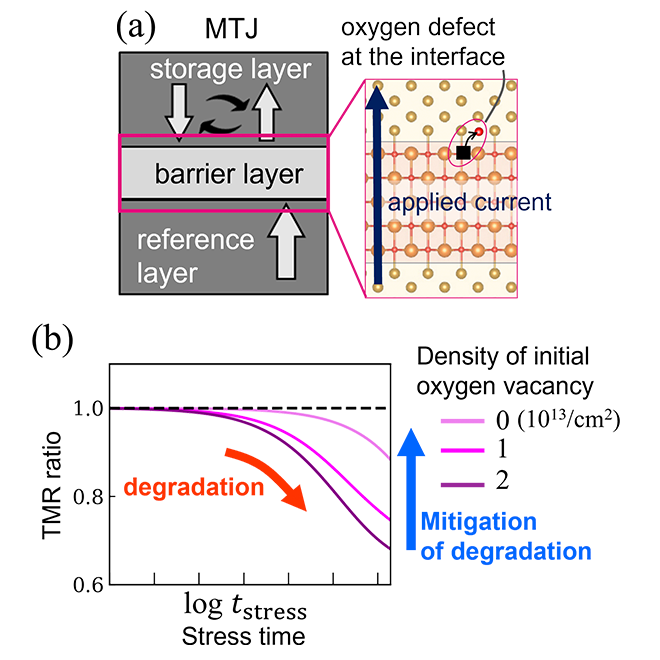Please select your location and preferred language where available.
Suppression of MTJ Degradation to Enhance Reliability of High-density MRAM
August 07, 2024
The widespread adoption of AI and digital transformation is increasing the demand for non-volatile memory with high density, high speed, and low cost. Research and development of spin-transfer torque magnetic random-access memory (STT-MRAM) is underway as a promising candidate. The storage element of STT-MRAM is called magnetic tunnel junction (MTJ). Scaling down of MTJ is necessary to realize STT-MRAM with high density and low cost.
We have investigated the stress-time dependent degradation of scaled MTJ and proposed mechanism and suppression methods of the degradation using the density functional theory calculation and time-evolution model for the stress-time dependent degradation. Our findings provide valuable insights into the reliability in high-density STT-MRAM.
Under an applied voltage, a few MTJ bits showed the increase in the resistance and the degradation of the tunnel magnetoresistance (TMR) ratio. The observed degradation poses a serious concern of readout errors because TMR ratio is used for readout operations.


Figure 1 shows the simulation results obtained by the density functional theory calculation and the time evolution model. We have found that the oxygen defects at the interface of the barrier layer can explain the degradation. Furthermore, it has been revealed that a reduction of the initial oxygen vacancy in MgO is an effective method for suppressing the resistance drift and degradation in TMR ratio. This research has been conducted collaboratively by Kioxia and Mie University.
This achievement was presented at 2024 IEEE IRPS (International Reliability Physics Symposium).
Reference
[1] R. Takashima et al., 2024 IEEE International Reliability Physics Symposium (IRPS), Dallas, USA, P10.EM.

